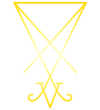Names of Zeus: Tengri
Tengri was and is the God of the Turks, Mongols, and many Siberian peoples. Before you read this article, I would like to give a few details. The word Gök means sky in Turkish. Tengri, on the other hand, has evolved into the word Tanrı, which means God in Turkish. Turks still use the word Tanrı when speaking about God, so Gök Tengri can be literally translated as Sky God. This must be kept in mind while reading this article.
Gök Tengri is the supreme deity of the ancient Turks, Mongols, and Altaic peoples, and a sacred being who ensures the order of the universe. Throughout history, this belief has been shaped into a worldview with animist and shamanist elements, intertwined with nature, and changed over time, taking on different forms. He is not only a God figure but also a cosmic concept representing the sky, the laws of the universe, and all supernatural forces.
RULER OF MEN
In the Göktürk inscriptions, there are statements that the Kagans received the right to rule from Gök Tengri. Among the ancient Turks, a divine power called kut was given to rulers by Tengri, and this power enabled the ruler to govern justly and correctly. If a ruler was unjust or weak, Tengri could overthrow his dynasty and appoint a new leader.
Tengri emphasizes the need for human beings to live in harmony with nature and sacred beings within the eternal cycle of the universe. Tengri is not just a God figure who speaks directly to humans; His will is manifested in natural phenomena, the fate of wars, and the rise and fall of societies. People prayed to Tengri and performed certain rituals and ceremonies to gain His favor. In this way, Tengri was expected to bring goodness, blessings, and protection to people. Shamans, or kam, played an important role in these rituals. They were seen as spiritual leaders who mediated between Tengri and humans, and during rituals, they would go into trance and communicate with spirits and supernatural beings.
Tengri is not only a mythological deity, He is also a central concept that determines the worldview, perception of the universe, and social order of the Turks and Mongols. His presence shaped the governance of many rulers throughout history, and He was regarded as a sacred force determining the fate of wars. The will of Tengri supported just and strong leaders and overthrew weak and cruel rulers. For the ancient Turks, therefore, Tengri was not only a corporeal being to be worshipped but also an integral part of existence, cosmic order, and justice.
According to the belief in Tengri, not only the sky was sacred, but also elements of nature such as mountains, rivers, and forests possessed divine power. These sacred beings, known as Earth-Water, were nature spirits that represented the will of Tengri on earth. To protect themselves from the wrath of these spirits and to receive their help, people would organize certain ceremonies and leave offerings.
RULER OF THE SKIES
Etymological studies on the origin of Tengri show that the word dates back to Proto-Turkic and means “sky” or “the supreme one.” The Mongolian word tenger also directly means “sky.” Some linguists have noted that the word Tengri is written as “Dingling” or “Tuque” in ancient Chinese sources and is associated with the ancient ancestors of the Turks. In addition, some scholars have argued that the belief in Tengri is also similar to ancient Indo-European and Iranian mythologies and has parallels with the belief in Ahura Mazda in Zoroastrianism.
According to mythology, Tengri is not an anthropomorphic being like the Gods of other mythologies. He is considered to be an abstract divine power, far removed from human features. His presence is felt in natural phenomena such as the infinite blue of the sky, the blowing of the wind, storms, and lightning. He is a being who is everywhere and nowhere at the same time.
In history, the belief in Tengri was embraced by the Göktürks, Uighurs, Mongols, and many other peoples, and gained great importance especially during the reign of Genghis Khan. Genghis Khan saw himself as the representative of Tengri on earth and said that his rule was shaped by the “will of the Blue Sky.” In the Mongol Empire he founded, Tengri was highly respected; prayers and eulogies were offered to Him before battles.
TEXTUAL SYMBOLISM
One name of Tengri is Tigir, which sounds like Teger (Lot, share, value, and the root word is teg, meaning "in equal value").
We can say it's similar to Daimon (again, from the root word meaning "lot, share, dispensing").
There has not yet been a satisfactory analysis of the etymology of Tengri in the Academy. One of the most plausible ideas belongs to M. Seyidov, who argues that the root of the word is tan(g), and in Old Turkic inscriptions and in many contemporary Turkic dialects, tan is the place where the sun rises. Therefore, the word tangrı is associated with the sun, or means "the one who summons the sun and makes it rise." Another idea, proposed by Talat Tekin, associates Tengri with the shamanic drum Tüngür, and links its meaning to the verb “to turn.”
Tang means "dawn" (similar to Zeus-Helios), but there is also tüngür, which means "to turn" (chakra). We know chakras are also called "Gods."
If we continue to ponder upon Tengri in Turkish history, we come across Tengri for the first time in Chinese sources. In the Book of Han (Han Shu), it is written that the Huns/Xiongnu called the Sky/Tian (天) Cheng Li (撑犁). Cheng Li must, of course, be a transcription of Tengri. Viewed in this way, this record suggests that Tian and Tengri are different variants of the same entity.
A sentence in the Ongin Inscriptions was read by Radloff as:
“Üze kök tengri han lüi yılka”
(Up above, when the Sky God [written tengri] is in the Year of the Dragon).
The reference here is to the twelve-animal calendar (referring to the Chinese zodiac in English). This calendar is based on the cycles of Jupiter. One cycle of Jupiter around the Sun is completed in 12 years. Radloff's reading, confirmed by Hamilton, leads to the conclusion that the sentence actually means:
“When Jupiter (Tengri Khan) is in the Year of the Dragon,” which equates Kök Tengri with Jupiter. Since Jupiter is Zeus, we confirm that they are the same God.
The most interesting thing about Tengri is that all His counterparts start with the letter T, such as Tinia, Tian, Tyr, Dingir...
Even the Turkish Tin, meaning "Soul," sounds like Tian. And Zeus being the figure at the top of Olympus, again, we can see the reference between the Crown and the Soul, as Tengri means "Sky."
Another topic is that while the Köktürk inscriptions mention Earth, Sky, God, and Man at the beginning of the inscriptions, the inscription sent by the Chinese Emperor as a gift also mentions God and Man at the beginning.
Just as Tian is in the form of a human being, Tengri takes the form of a human being by forming a Tetragrammaton.
In fact, the original form of the word here is probably Tengeri. Here, too, we come across Teng-Er. In other words, “Equivalent to Man” or “Man Equivalent to Him." Even if this is not the case, the Er rune as part of the Tetragrammaton has the meaning of “Man."
Another point is that Ibn Fadlan says that when the Turks pray, they raise their hands to the sky and say “One Tengri.” This indicates that He is in fact the Almighty Zeus/Monas.
In fact, just as the Japanese and Asians in general have a broad concept of God, we see that the things in the universe are also attributed a divinity, and in the same travelogue, we find that everything can be called Tengri.
Another thing about Monas is that the full form of the name is Kök Tengri. Kök means “green, blue, dark [indigo] blue,” and also “root.” Tengri means “Sky.” So here, too, the Root and Crown chakras are combined (all spectrums from bottom to top). We also think that the color Dark Blue could be Akasha and indicate the Monas in this way.
Inscriptions written by the Turks show that Tengri is represented by the sky itself and is the absolute ruler of the universe. It is Tengri who grants nations their states and monarchs the blessing to ascend the throne. This is why Tengri is sometimes called “il berigme tengri” (God who gives country). If nations or rulers deviate from Törü (Law/Dharma), Tengri withholds the blessing and punishes the nations. In ancient Turkic inscriptions, Törü (Law/Dharma) and il (State/Country) are often mentioned together, because of the relationship between the two. When one is broken, the other is also broken.
MONGOLIAN TENGRI
As was stated, Tengri was associated with both the ancestral figure Modun Shanyu and Genghis Khan, who claimed Him as a divine guide and patron. All Mongols are held to be descendants of Tengri. Mongolian religion is heavily based on shamanism and contact with ancestors. The more learned in initiation one is, the more one goes toward the source of God.
It can also mean an ancestral spirit or guidance from a shaman who channels the concept. One myth involves seven flying shamans who represent the powers of the chakras.
MODERN CONTEXT
Today, Tengrism or Tengricism can still be found in Kazakhstan, Kyrgyzstan, and some Mongolian communities. In the modern world, a new movement called Neo-Tengrism has emerged, and some groups have tried to develop a spiritual system based on Tengri. Today, the word Tengri continues to exist in Turkish as “God,” and is still used in the language of many Turkic peoples to mean a divine power.
BIBLIOGRAPHY
Türklerin ve Moğolların Eski Dini, J.Paul Roux
Türk Mitolojisi I-II.Cilt, Prof. Dr. Bahaeddin Ögel
Türklük ve Şamanlık, Wilhelm Radloff
Shamanism, Mircea Eliade
Turkish Mythology: Epics with Sources and Explanations (Vol. 2)., Ögel, B.
Introduction to Turkish Cosmology, E. Esin
Shamanism in History and Today: Materials and Research, İnan A.
CREDITS:
Thersthara (wrote much of article, research)
Elteber (Tengri Symbolism section, extensive excellent research)
Elite (help with Tengrism, Turkic symbolism)
Jax911 (Tengri in Mongolia suggestions, Mongol suggestions)
Karnonnos [TG] (supervision)

 አማርኛ
አማርኛ العربية
العربية বাংলা
বাংলা Български
Български 中文
中文 Čeština
Čeština Dansk
Dansk Deutsch
Deutsch Eesti
Eesti Ελληνικά
Ελληνικά Español
Español Français
Français हिन्दी
हिन्दी Hrvatski
Hrvatski IsiZulu
IsiZulu Italiano
Italiano 日本語
日本語 Kiswahili
Kiswahili Magyar
Magyar Македонски
Македонски नेपाली
नेपाली Nederlands
Nederlands فارسی
فارسی Polski
Polski Português
Português Română
Română Русский
Русский Slovenščina
Slovenščina Suomi
Suomi Svenska
Svenska Tagalog
Tagalog Türkçe
Türkçe